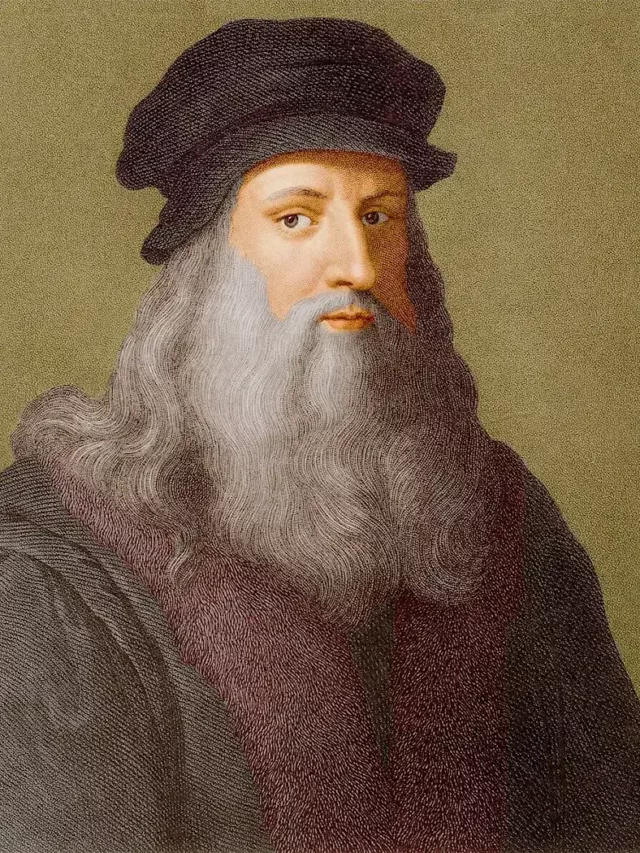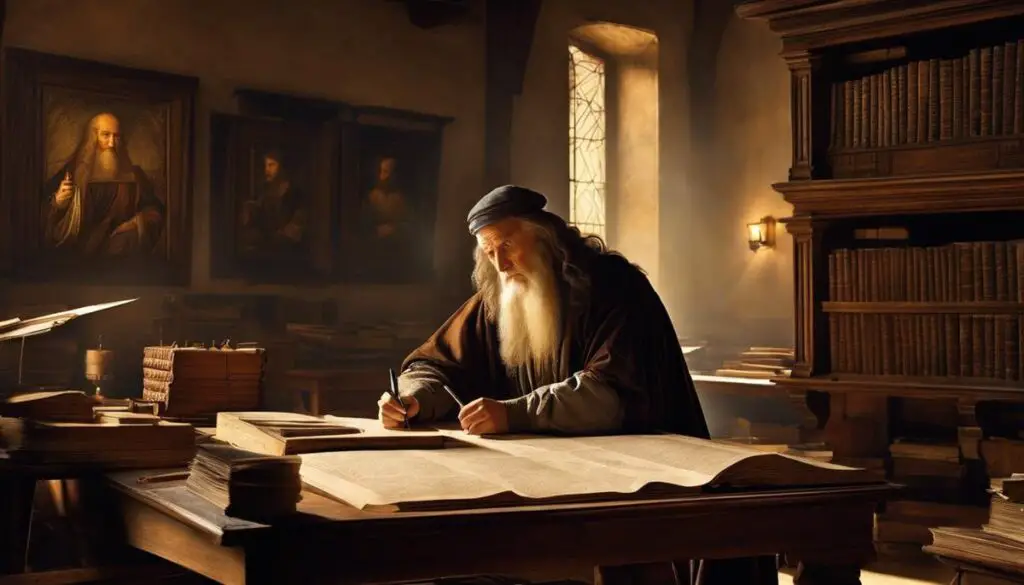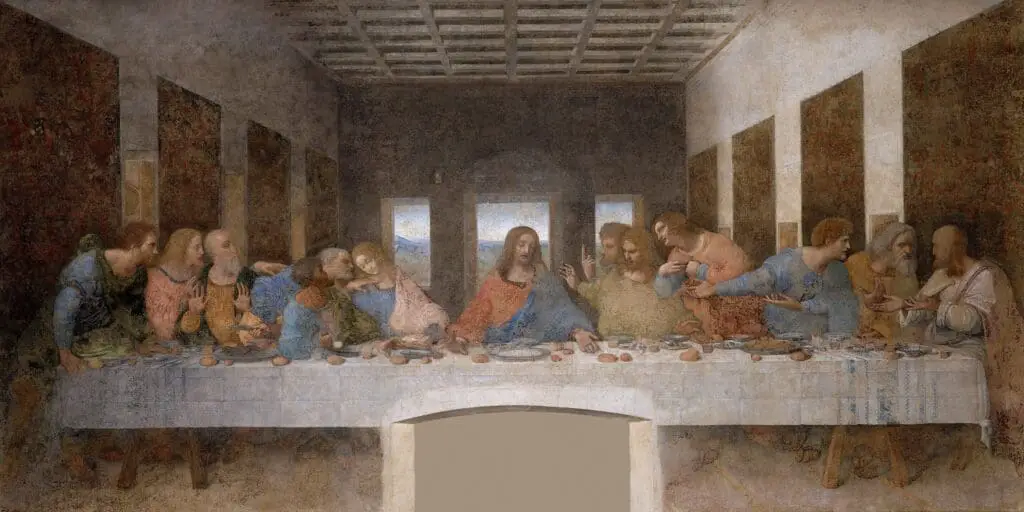Most people think of Leonardo da Vinci as an artist who painted some of the world’s greatest paintings as the Mona Lisa or The Last Supper. Many may not realize that Leonardo, during his lifetime, was a master of many different types of professions.
Leonardo da Vinci is known to have had many different titles and professions during his lifetime. He was able to master this profession because he was a genius. But more than just being a genius, Leonardo is self-educated and never stopped learning. He had an insatiable amount of curiosity about all kinds of subjects.
Table of Contents
- Leonardo da Vinci And His Different Professions
- Some Reasons Why Leonardo da Vinci Could Master So Many Professions:
- Frequently Asked Questions
- Related Questions
Leonardo da Vinci And His Different Professions
Leonardo was a man who was known to have a variety of professions. We can all say that he was a brilliant artist, but even with his art, his patrons often got frustrated and asked to return the money as he did not complete a commission.
Also an artist, he was a notoriously slow painter and would complete his work late. Yet the few pieces of artwork he left are considered some of the most important pieces ever created.
He was a self-taught medical researcher fascinated with studying the human body and how the body works. During his lifetime, he dissected over 30 corpses.

He was an inventor who would look at how to solve a problem when he saw a problem. He was an engineer who made technical drawings for all his creations and a mathematician who studied math.
The list of all his professions is quite long, but what made him unique is that Leonardo was not afraid to try something new and teach himself new things he wanted to learn about.
Like the rest of us, he could master many of these professions, and many he did not. But no one can fault him for trying to master and learn so many different professions.
Some Reasons Why Leonardo da Vinci Could Master So Many Professions:
There are some traits that Leonardo da Vinci had that helped him to master so many different professions in his life. We can all learn from his life and learn from him.
Leonardo da Vinci Was A Genius
By all accounts, Leonardo da Vinci was a Genius. Indeed, the artwork he left to us, including the Mona Lisa and The Last Supper, shows artistic genius.
Today, when we look at a genius, we measure it by someone with an IQ over 140. But during Leonardo’s time, they did not know IQ, so all we have left is to look at Leonardo and all he left for us to view today.
A genius is defined in the Oxford Dictionary as:
“exceptional intellectual or creative power or other natural ability.”
Oxford Dictionary
Certainly, we can say that Leonardo had exceptional intellectual and creative power; he certainly had a lot of natural ability as he was very much a self-taught man.
Because he was a genius, it does not mean he was proficient at everything, but he had exceptional intellectual and creative powers.
Leonardo da Vinci Was Self-taught
One of the great attributes that Leonardo da Vinci had was that he was not afraid to learn or be self-taught. He did not let a lack of formal education in many of these professions stop him from learning and working on mastering them.
Leonardo was a self-taught kid and did not go to school because he was born out of wedlock. But Leonard did not allow this to stop him, and he thrived in learning things independently.

From his childhood to when he was on his deathbed, he never stopped learning and seeking to master something new. Even on his deathbed, he drew the spiral forms and tried to figure out the math behind them.
Leonardo da Vinci shows us all that we can learn and spend our lives seeking to improve at whatever we choose. We can also pay for our lives in pursuit of knowledge.
Leonardo da Vinci Was Curious
OneLeonardo’sdo’s most critical defining traits to help him with all the different professions was extremely curious. He was known to go around with his notebooks, write, and draw out things as they came to him.
Leonardo kept a series of notebooks that he would carry around from Florence to Milan. He was constantly sketching people’s faces and expressions, trying to fully understand their emotions and betray their inner feelings.
Leonardo da Vinci And The Study Of Human Emotions
Leonardo da Vinci only finished painting one mural during his lifetime, known as the Last Supper. It is one of the most famous paintings of the Last Supper ever created.
Duke Ludovico Sforza commissioned Leonardo to paint the Last Supper mural. What makes the Last Supper mural so unique is that he painted it at the exact time when Christ told the Apostles during The Last Supper meal that one of them would betray him. Leonardo showed the apostles’ reactions, including Judas, who betrayed Christ.

In The Last Supper, we can see how he was painting not just the apostles but also their reaction when Christ told them one of them would betray. Working with inner emotions was a new way of painting for his time and showed his creative genius.
He accomplished this as he spent the time needed to understand the human body and emotions. Leonardo was curious enough to do and study this to help make him a great artist.
No doubt Leonardo da Vinci was a genius, but more than that, he was also self-taught and extremely curious. We can all learn from him that it is okay to seek to master different professions, but to do so, we may also need to be self-taught and have the same kind of curiosity.
Frequently Asked Questions
What were the main professions that Leonardo da Vinci mastered during his lifetime?
Leonardo da Vinci was not only an accomplished artist but also excelled in fields such as anatomy, engineering, architecture, and even made significant contributions to the study of flight and anatomy.
What factors contributed to Leonardo da Vinci’s ability to master various professions?
Leonardo’s genius was complemented by his insatiable curiosity. He had an unquenchable thirst for knowledge, which drove him to explore and master a wide range of disciplines.
How did Leonardo da Vinci’s self-education play a role in his mastery of different professions?
Leonardo was largely self-taught, which allowed him the freedom to explore diverse subjects. His independent learning style fostered a deep understanding and mastery of various fields.
Were there specific techniques or methods that Leonardo da Vinci used to learn and master different professions?
Leonardo’s observational skills were unparalleled. He engaged in meticulous study, made detailed sketches, and conducted experiments, contributing to his profound understanding of subjects ranging from art to anatomy.
Did Leonardo da Vinci’s mastery in one profession influence his abilities in others?
Yes, Leonardo’s interdisciplinary approach allowed him to draw connections between different fields. His artistic skills, for example, influenced his anatomical drawings, and his engineering insights were reflected in his architectural designs.
How did Leonardo da Vinci’s insatiable curiosity contribute to his ability to master diverse professions?
Leonardo’s relentless curiosity fueled his desire to explore and understand the world around him. This curiosity motivated him to delve into numerous fields, fostering his mastery in each.
Did Leonardo da Vinci face any challenges in pursuing mastery across multiple professions?
While Leonardo faced challenges, such as limited resources and societal expectations, his determination and passion for learning drove him to overcome obstacles in his pursuit of mastering diverse professions.
Was there a specific time period in Leonardo da Vinci’s life when he focused on mastering a particular profession?
Leonardo’s exploration of various professions occurred throughout his life. While he is often associated with the Renaissance, his pursuit of knowledge and mastery spanned his entire lifetime.
How did Leonardo da Vinci’s contributions to different professions impact the fields he was involved in?
Leonardo’s contributions left a lasting impact on various fields. His anatomical studies, for instance, advanced the understanding of human anatomy, and his engineering concepts influenced future developments in technology and design.
Did Leonardo da Vinci’s approach to learning and mastery have a lasting influence on later generations?
Absolutely. Leonardo’s interdisciplinary approach to learning and his commitment to mastery served as a model for future thinkers and innovators. His legacy continues to inspire individuals to pursue knowledge across diverse disciplines.
Anita Louise Art is dedicated to art education, great artists, and inspiring others to find and create their art. We love art that uplifts and inspires. #ArtToMakeYouSmile! #ArtToMakeYouHappy!
If you want to see any of my art, you can find out more by clicking here. If you are interested in what inspires me and my paintings, you can discover more by clicking here.
We have a free newsletter and would love you to be part of our community; you can subscribe to the newsletter by clicking here. I would be happy to talk to you if you have any questions. You can reach me, Anita, by clicking here.
Subscribe to our Anita Louise Art YouTube Channel with great videos and information by clicking here.
Join us for our podcast “5 Minutes With Art.” Spend just 5 minutes a week with us to discover and learn about great art and artists. You can find out more about our podcast by clicking here.
Related Questions
What Inspired Leonardo da Vinci To Paint The Last Supper?
Duke Ludovico Sforza commissioned Leonardo to paint the Last Supper mural. What makes the Last Supper mural so unique is that he painted it at the exact time when Christ told the Apostles during The Last Supper meal that one of them wouapostles’ him. Leonardo showed the apostles’ reactions, including Judas, who betrayed Christ.
By clicking here, you can learn more by reading What Inspired Leonardo da Vinci To Paint The Last Supper?.
Was Leonardo da Vinci A Philosopher?
Leonardo da Vinci was a philosopher; being a philosopher means that you want to seek wisdom. Leonardo was one person who wanted to seek wisdom or enlightenment in his life. Leonardo was an active observer and learner of the human body, human behavior, and nature.
By clicking here, you can learn more by reading Was Leonardo da Vinci A Philosopher?.

